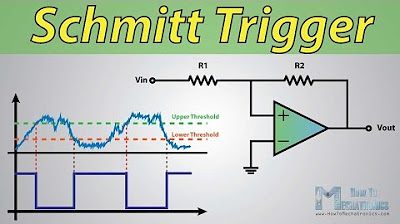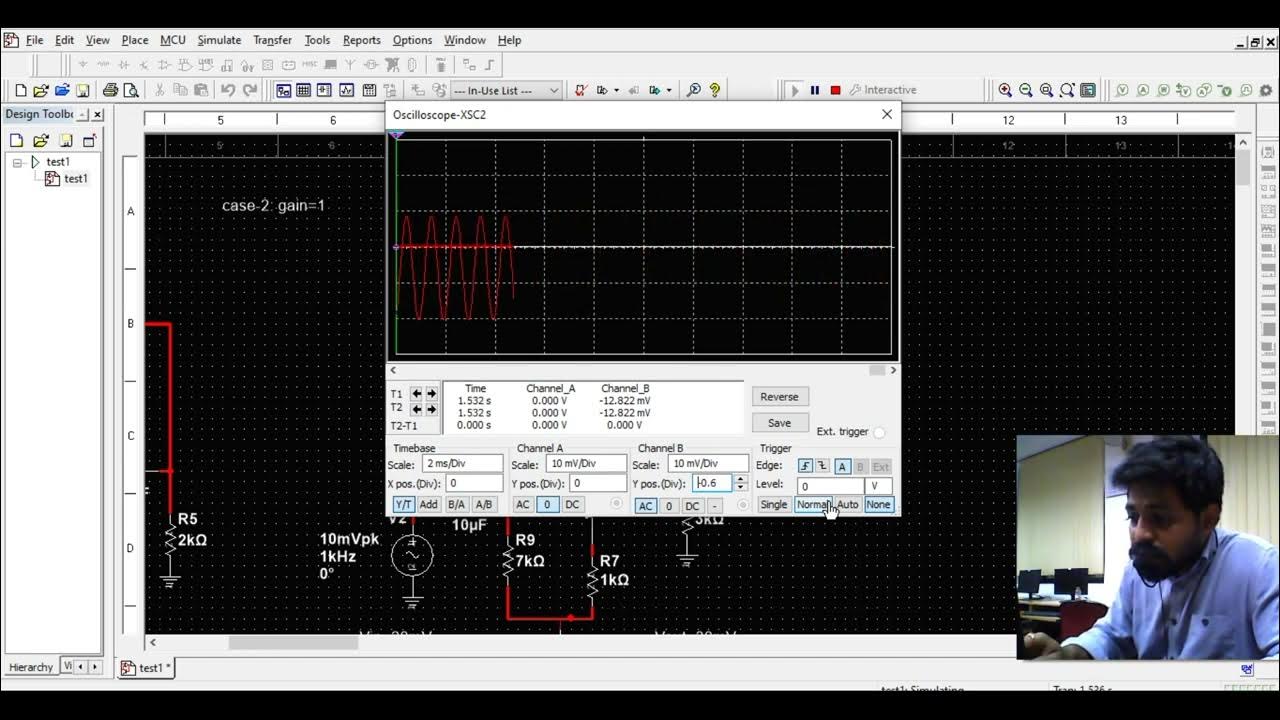Cara Membuat Penguat Input Amplifier Non Inverting + Rumus Penjelasannya
Summary
TLDRIn this tutorial, the speaker demonstrates how to build an input amplifier to boost weak signals from devices like phones or music players. They explain the difference between non-inverting and inverting amplifiers and show how to connect components such as operational amplifiers, resistors, and feedback loops. The speaker provides formulas for calculating the amplification factor and emphasizes the importance of using the correct components to avoid damaging equipment. Practical examples are given, with clear instructions and warnings about potential issues when amplifying signals in high-powered setups.
Takeaways
- 😀 Input amplifiers are used to amplify weak input signals for better performance in audio systems.
- 😀 Two types of input amplifiers: Non-inverting (output stays in phase with input) and Inverting (output is flipped relative to input).
- 😀 Non-inverting amplifiers maintain the same polarity for input and output signals.
- 😀 The gain of a non-inverting amplifier is calculated using the formula: Gain = 1 + (R2 / R1), where R1 and R2 are resistors in the circuit.
- 😀 The amplifier setup involves using an op-amp like JRC 4560 and connecting components such as resistors (10kΩ, 2kΩ).
- 😀 Single-supply and dual-supply configurations are possible for powering the op-amp, but the speaker should ideally use a dual-supply for better performance.
- 😀 Proper component selection, such as using datasheets for the op-amps, is crucial for building a functional amplifier.
- 😀 The feedback resistor (R2) is key to determining the amplifier's gain and must be chosen carefully based on the desired output.
- 😀 Testing the amplifier involves inputting a weak signal and observing the amplified output, which should be proportionally stronger.
- 😀 It's important to ensure the amplifier’s gain is not too high, as excessive gain may cause distortion or damage to the audio equipment.
- 😀 For very high gains, resistor values can be adjusted, and formulas can be used to fine-tune the amplification level to desired specifications.
Q & A
What is the purpose of an input amplifier?
-The purpose of an input amplifier is to strengthen weak audio signals from devices like phones or music players, ensuring that the sound is clear and powerful. Without it, the signal may be too weak to produce satisfactory output.
What is the difference between a non-inverting and an inverting input amplifier?
-In a non-inverting input amplifier, the output signal is in phase with the input, meaning that if the input is positive, the output is also positive. In contrast, an inverting amplifier produces an output that is inverted, meaning that if the input is positive, the output will be negative.
What are the basic components needed to build an input amplifier?
-The basic components needed are an operational amplifier (OPAmp), resistors, and soldering tools. Popular OPAmp models include JRC4560, TL071, and others, while resistors control the gain of the amplifier.
How do you calculate the gain of a non-inverting amplifier?
-The gain of a non-inverting amplifier is calculated using the formula: Gain = 1 + (R1 / R2), where R1 is the resistor connected to the feedback loop and R2 is the resistor between the inverting input and ground.
What resistor values can be used for an input amplifier, and how do they affect the gain?
-Common resistor values are 10k, 2k, 1k, and others. The resistor values determine the amplifier's gain. For example, using R1 = 10k and R2 = 2k gives a gain of 6 times. Higher resistor values can increase the gain further.
Why is it important to choose the correct operational amplifier (OPAmp) for the input amplifier?
-Choosing the correct OPAmp is crucial for ensuring the amplifier functions efficiently. Different OPAmp models have various characteristics such as voltage supply range, noise levels, and output drive capabilities, which directly affect performance.
What happens if you overdrive the amplifier with too much gain?
-Overdriving the amplifier can lead to distortion and potential damage to the amplifier and speakers. The output signal might reach a level where the amplifier cannot handle it, causing distortion or speaker failure.
Can an input amplifier be used with a high-power amplifier?
-An input amplifier is typically used for low-power amplifiers. If used with a high-power amplifier that already has a significant gain, adding an input amplifier may cause distortion or damage to the system. It's not recommended to over-amplify signals beyond the capacity of the amplifier.
How does feedback affect the input amplifier circuit?
-Feedback in an input amplifier circuit controls the gain by routing part of the output signal back to the inverting input. This helps stabilize the amplifier's performance and ensures the desired amplification is achieved.
What are some practical applications of input amplifiers in audio systems?
-Input amplifiers are used in audio systems to strengthen weak signals from audio sources like phones, MP3 players, or microphones. They are commonly used in home audio systems, sound recording setups, and public address systems to ensure clear and consistent sound output.
Outlines

このセクションは有料ユーザー限定です。 アクセスするには、アップグレードをお願いします。
今すぐアップグレードMindmap

このセクションは有料ユーザー限定です。 アクセスするには、アップグレードをお願いします。
今すぐアップグレードKeywords

このセクションは有料ユーザー限定です。 アクセスするには、アップグレードをお願いします。
今すぐアップグレードHighlights

このセクションは有料ユーザー限定です。 アクセスするには、アップグレードをお願いします。
今すぐアップグレードTranscripts

このセクションは有料ユーザー限定です。 アクセスするには、アップグレードをお願いします。
今すぐアップグレード関連動画をさらに表示
5.0 / 5 (0 votes)






